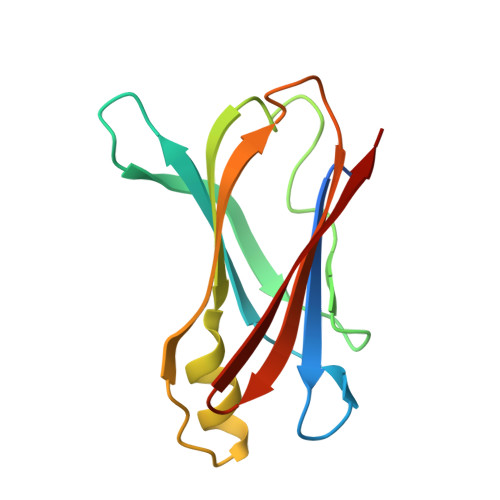Iodine atoms: a new molecular feature for the design of potent transthyretin fibrillogenesis inhibitors.
Mairal, T., Nieto, J., Pinto, M., Almeida, M.R., Gales, L., Ballesteros, A., Barluenga, J., Perez, J.J., Vazquez, J.T., Centeno, N.B., Saraiva, M.J., Damas, A.M., Planas, A., Arsequell, G., Valencia, G.(2009) PLoS One 4: e4124-e4124
- PubMed: 19125186
- DOI: https://doi.org/10.1371/journal.pone.0004124
- Primary Citation of Related Structures:
3FC8, 3FCB - PubMed Abstract:
The thyroid hormone and retinol transporter protein known as transthyretin (TTR) is in the origin of one of the 20 or so known amyloid diseases. TTR self assembles as a homotetramer leaving a central hydrophobic channel with two symmetrical binding sites. The aggregation pathway of TTR into amiloid fibrils is not yet well characterized but in vitro binding of thyroid hormones and other small organic molecules to TTR binding channel results in tetramer stabilization which prevents amyloid formation in an extent which is proportional to the binding constant. Up to now, TTR aggregation inhibitors have been designed looking at various structural features of this binding channel others than its ability to host iodine atoms. In the present work, greatly improved inhibitors have been designed and tested by taking into account that thyroid hormones are unique in human biochemistry owing to the presence of multiple iodine atoms in their molecules which are probed to interact with specific halogen binding domains sitting at the TTR binding channel. The new TTR fibrillogenesis inhibitors are based on the diflunisal core structure because diflunisal is a registered salicylate drug with NSAID activity now undergoing clinical trials for TTR amyloid diseases. Biochemical and biophysical evidence confirms that iodine atoms can be an important design feature in the search for candidate drugs for TTR related amyloidosis.
Organizational Affiliation:
Unit of Glycoconjugate Chemistry, Institut de Química Avançada de Catalunya, I.Q.A.C.-C.S.I.C., Barcelona, Spain.















